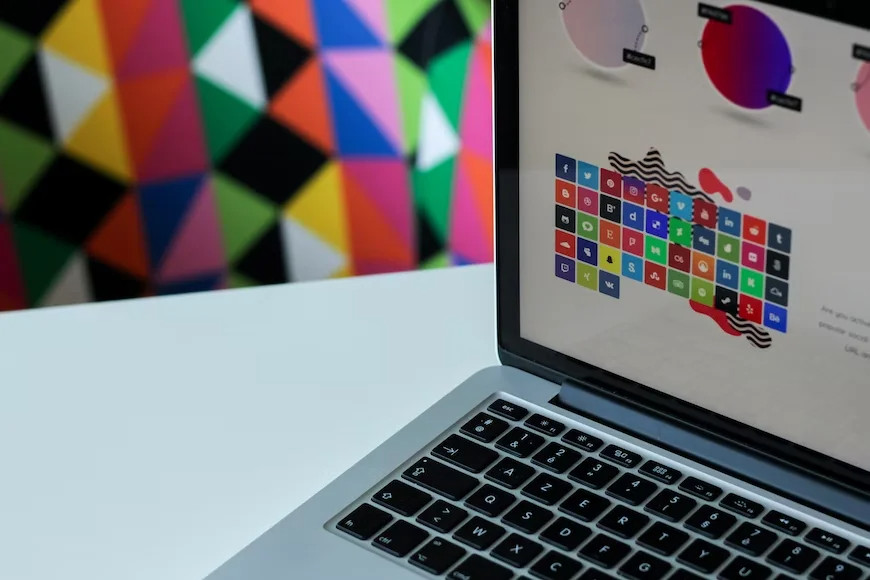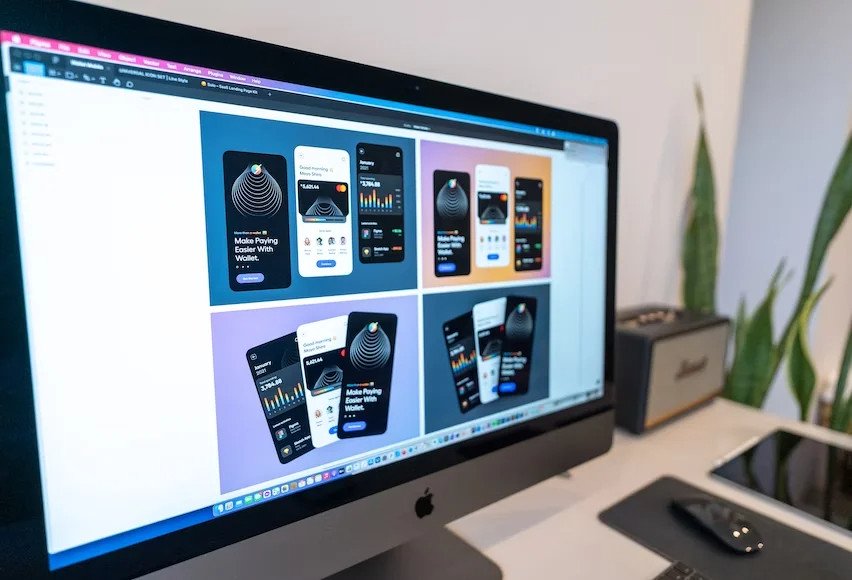Designing websites is not just about visual design. Nowadays, most websites are either based on adaptive or responsive design approaches. As a web designer, you need to be aware of the differences between adaptive design vs responsive design to understand your client’s requirements and create successful websites. It is not difficult to optimize a website for either approach.
Responsive design is a web design technique wherein a website is coded in a way that allows one or more devices to adjust automatically to the user’s screen size. Adaptive design is similar, with the added capability to specifically target different screen sizes. There are two high-level approaches to building a site that works well on multiple devices. Learn the difference between adaptive design vs responsive design.
What Is Meant by Adaptive Design?
Adaptive design is a design approach that creates multiple versions of a web page to fit a user’s screen size. Unlike a static page design, where one web page loads content responsively according to different devices or screen sizes, adaptive design is a GUI that makes different fixed layouts. It improves responsive web design, which provides a targeted solution for specific devices.
The multiple layouts of a webpage in adaptive design help in adjusting to User Interface (UI) for different devices. It enhances a website design and makes it easier for users to interact with a web page.
What Is Meant by Responsive Design?
In responsive design, the same content is served up to every device, but that content shifts around and is reflowed depending on the device’s size and orientation. In simpler words, Responsive design is a technique that allows the website to adjust itself based on a given device’s screen size, be it in portrait or landscape mode or based on its orientation.

Components of Responsive Web Design
The responsive web design approach or responsive design has three main elements. Read below in detail about these components:
- The Media Query
- Web Browser
- Website Interface
Media Queries
Media queries are a vital piece of responsive website architecture, as they permit you to make various designs depending on the size of the viewport. They additionally grant website designers to create different formats using comparative HTML documents by explicitly serving formats according to the client expert’s features, similar to the browser’s window’s size.
They can likewise be utilized to recognize different things about the interface your webpage is running on, for instance, whether the client is utilizing a touchscreen instead of a mouse
Web Browser
Since sites can contain many pictures, it is also fundamental to keep these pictures liquid. The idea behind fluid pictures is to convey ideas at the best size the users will use. In responsive website pages, designers and developers don’t report the height and width of your code.
They let the programs resize the photos depending on the situation. Designers use CSS to deal with the relative size of pictures. It’s an exceptional and direct strategy to accurately resize pictures.
Website Interface
Most mobile phones people use have touch screens these days, which requires care of the size of the interactive components inside interfaces.
Besides the adaptability of pictures, local controls, for example, consoles and drop-out menus, ought to be improved so it can give an extraordinary encounter to its clients, whether it’s on a mobile device or PC desktop. Therefore, the website interface is a significant component of responsive designs.
Key Differences Between Adaptive Design vs Responsive Design
What makes an adaptive design different than a responsive web design? Let’s learn the basic differences between these design approaches. The primary difference between adaptive design vs responsive design is the level of granularity involved and the capabilities they offer. But let’s see what the other differences are:
- Unlike in adaptive, in responsive design, the layout will reconfigure elements to different screen sizes.
- The content in adaptive design follows a fixed layout, whereas in responsive design it flows dynamically.
- A responsive design website uses a single fluid layout, but an adaptive design uses multiple static designs with breakpoints to signal an appropriate layout.
- Adaptive design makes a few different layouts and loads the most suitable one. On the other hand, responsive design uses one layout which adjusts itself for different screens.

What Is Mobile First Responsive Design?
You should be aware of the mobile-first approach if you are a website designer. Website designers tend to design a website for mobile screens first as the number of users who access any website through a mobile device is very large. With the increase in mobile devices worldwide, mobile website users have also increased. Hence, a mobile-first approach was developed to better target mobile users for websites.
Mobile-first responsive design is used in responsive websites where designers optimize their website design for mobile devices first and then make it responsive for other screens. This strategy starts by checking and creating web design prototypes for mobile devices to get an overall idea of how the final layout should look.
Read more about Mobile First Approach here.
Comparison Between Adaptive Design vs Responsive Design
Both designs offer a better user experience and have the same goal. You cannot consider which one of both is the best. While both approaches have equal benefits for designers and users, each approach has some drawbacks. Let’s look at the benefits and disadvantages of adaptive vs responsive design.
Benefits of the Adaptive Design Approach
- It prioritizes users’ needs according to the situation.
- The adaptive design gives tailor-made solutions to the user’s experience.
- In adaptive design, if you want to add, change or update something you do not have to re-code again from the scratch.
- When it finds a screen with a high density, it displays high-resolution graphics which gives the user a better experience.
- To improve the user experience on each device, adaptive web design creates distinct website versions. The content and layout of this website can be altered to fit the screen best.
- When a user visits a website on any device, the layout that looks best on the screen of the device is loaded. Due to this, traffic on the website is decreased which results in increased loading speed.

Benefits of Responsive Design Approach
- Responsive web designs require less maintenance. You can reduce the time you spend updating your designs using a single responsive design.
- Anyone with any device, whether it is a mobile phone, desktop, or tablet, has to enter the same URL to visit the website. It is better for maximizing search engine rankings.
- SEO (Search Engine Optimization) typically places a premium emphasis on responsive websites. Responsive websites load much faster on small devices such as mobile phones than desktops, increasing positive user experience.
Drawbacks of the Adaptive Design Approach
- Tablet users may not find a mobile-optimized layout version to be as user-friendly as it is difficult for them to navigate with bigger screen sizes.
- Adaptive web designs are more difficult to create. Different website layouts are created to fit best on the screen hence adaptive web designs take a lot of time and effort.
- Adaptive web designs create more layouts for different devices. To create it one needs a large number of developers, as well as substantial budgets to deal with complexity. Due to its complexity, adaptive web designs are expensive.
- Adaptive websites are difficult to maintain. Each version of the website must be maintained and updated separately, that’s why it is not easy to maintain all websites version at the same level.

Drawbacks of the Responsive Design Approach
- The development of responsive websites takes a significantly large amount of time than compared to standard websites.
- Responsive Websites sometimes take a significant amount of time to load the page. On mobile devices, there is a noticeable lag of 2-5 seconds caused by the rescaling and loading times.
- Responsive websites target users of modern browsers and operating systems. Someone using an older version of the Windows operating system with a dial-up connection cannot access the site.
Also Read about Design Systems for Products.
Important Considerations for Cross-Platform Design
Cross-platform design is a process used for transferring a particular product design across different platforms to meet the target users of different devices. For example, when a company creates a mobile application design with an existing website design for its brand, it is necessary to follow the cross-platform design rules. This ensures that we offer users the same experience with our product on different platforms.

In order to create cross-platform designs, some important considerations should be made before starting with the actual design process. These include:
- Consistency
- Continuity
- Context
- Complementary
1- Consistency
The first rule in cross-platform design is to keep it consistent by using similar elements and designs. This makes your user feel comfortable using your application or website on different platforms like iOS and Android. It also helps build users’ trust as they become more familiar with your product.
2- Continuity
The continuity between platforms must be maintained throughout your application’s lifecycle, including the development, deployment, and maintenance phases. You can use tools like Xcode or Android Studio to develop apps for iPhone X or Samsung Galaxy S9 to keep continuity.
3- Context
In cross-platform design, there are different contexts that are required to be taken into consideration while creating applications or websites for other platforms. For example, when designing an app for iOS users, you need to take care of things like navigation bars and buttons, etc., which are specific features only available on Apple devices.
In contrast, on Android devices, such features may not always be present. Hence, these features must be included in any development process undertaken by developers who work on different devices.
4- Complementary
Complementary means to create a design that complements user experience (UX). Or to create something new to attract users to your design. For example, duplicating a desktop design on a cell phone enhances the user’s experience by adding an extra component.
Read more about 18 Tools to Measure, Quantify and Optimize the UX.
Adaptive Design vs Responsive Design: Which Approach Is Better?
It’s hard to choose which approach is better when discussing adaptive design vs responsive design. In our opinion, adaptive design is probably a better choice for most sites. It will ensure the best user experience according to whichever device the user is interacting with the interface. In responsive design, a screen loads from a desktop into a smaller device, but the adaptive design offers situational solutions for user demand.
It is imperative to note that as designers, we must show users that we’re in tune with their needs on a mobile device by making our design touch friendly. And the same thing can be done for desktop users. Designers work their way up from the lowest resolution of the website to the highest. Therefore, we should prefer to choose the design which our client demands.
Read also about What is UI Design?

Read about the best UI/UX practices.
Conclusion
When adapting content for different devices, a site can either employ responsive or adaptive design. Both adaptive design vs responsive design work toward the same goal – that of providing a good experience on all screens – but at their core, they are very different methodologies.
The main difference between adaptive design vs responsive design is that in adaptive design, additional content and functionality can be dynamically loaded onto the pages as they are viewed on larger screens. This results in a better user experience when the website is viewed using the more advanced technology of computers, smartphones, and other mobile devices.
FAQs
What Is Adaptive Design in Machine Design?
Adaptive design in machine design or design in machine elements means modifying technology to save time and money for engineers. It is a far more effective approach to designing machine elements by following adaptive design principles.
How Can You Tell if a Website Is Responsive or Adaptive?
It is straightforward to identify if a website is responsive or adaptive. If the web page layout looks different on different devices (i.e, mobile or laptop), it is an adaptive design. And if the exact layout resizes itself on different screens, it is responsive.
